 One of the key developments in economics in recent years has been the growing influence of behavioural economics. We considered some of the insights of behavioural economics in a blog in 2016 (A nudge in the right direction?). As the post stated, ‘Behavioural economists study how people’s buying, selling and other behaviour responds to various incentives and social situations. They don’t accept the simplistic notion that people are always rational maximisers.’ The post quoted from a Livemint article (see first linked article below):
One of the key developments in economics in recent years has been the growing influence of behavioural economics. We considered some of the insights of behavioural economics in a blog in 2016 (A nudge in the right direction?). As the post stated, ‘Behavioural economists study how people’s buying, selling and other behaviour responds to various incentives and social situations. They don’t accept the simplistic notion that people are always rational maximisers.’ The post quoted from a Livemint article (see first linked article below):
According to behavioural economists, the human brain neither has the time nor the ability to process all the information involved in decision making, as assumed by the rational model.
Instead, people use heuristics. A heuristic technique is any approach to problem-solving, such as deciding what to buy, which is practical and sufficient for the purpose, but not necessarily optimal. For example, people may resort to making the best guess, or to drawing on past experiences of similar choices that turned out to be good or bad. On other accasions, when people are likely to face similar choices in the future, they resort to trial and error. They try a product. If they like it, they buy it again; if not, they don’t.
On other occasions, they may use various rules of thumb: buying what their friends do, or buying products on offer or buying trusted brands. These rules of thumb can lead to estimates that are reasonably close to the utility people will actually get and can save on time and effort. However, they sometimes lead to systematic and predictable misjudgements about the likelihood of certain events occurring.
In traditional models of consumer choice, individuals aim to maximise their utility when choosing between goods, or bundles of goods. The context in which the choices are offered is not considered.
Yet, in real life, we see that context is important; people will often make different choices when they are presented, or framed, in different ways. For example, people will buy more of a good when it is flagged up as a special offer than they would if there is no mention of an offer, even though the price is the same.
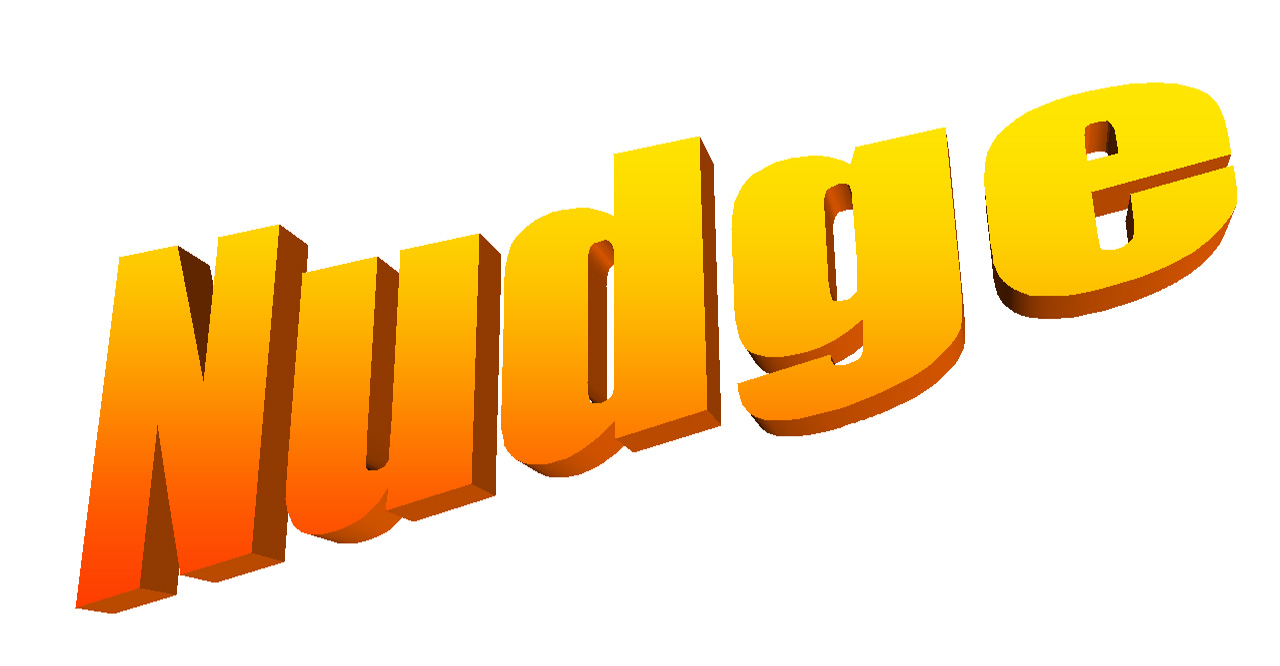 The recognition that framing is important to choices has led to the development of nudge theory. Indeed, it underpins many marketing techniques. These seek to persuade people to make a particular choice by framing it in an optimistic way or presenting it in a way that makes it easy to decide.
The recognition that framing is important to choices has led to the development of nudge theory. Indeed, it underpins many marketing techniques. These seek to persuade people to make a particular choice by framing it in an optimistic way or presenting it in a way that makes it easy to decide.
Governments too use nudge theory. In the UK, the Coalition government (2010–15) established the Behavioural Insights Team (BIT) (also unofficially known as the Nudge Unit) in the Cabinet Office in 2010. A major objective of this team is to use ideas from behavioural economics to design policies that enable people to make better choices for themselves.
The podcast linked below, looks at the use of nudge theory. The presenter, Mary Ann Sieghart looks at how we are being encouraged to change our behaviour. She also looks at the work of UCL’s Love Lab which researches the way we make decisions. As the programme notes state:
Mary Ann is grilled in UCL’s Love Lab to find out how she makes decisions; she finds taking the pound signs off the menu in a restaurant encourages her spend more and adding adjectives to the food really makes it taste better.
Walking through the Nudge Unit, she hears how powerful a tiny tweak on a form or text can get be, from getting people back to work to creating a more diverse police force. Popular with the political left and right, it has been embraced around the world; from Guatemala to Rwanda, Singapore to India it is used to reduce energy consumption, encourage organ donation, combat corruption and even stop civil wars.
But the podcast also looks at some of the darker sides of nudging. Just as we can be nudged into doing things in our interests, so too we can be nudged to do things that are not so. Politicians and businesses may seek to manipulate people to get them to behave in ways that suit the government or the business, rather than the electorate or the consumer. The dark arts of persuasion are also something that behavioural economists study.
The articles below explore some of the areas where nudge theory is used to devise policy to influence our behaviour – for good or bad.
Podcast
Video
Articles
- New frontiers of human behaviour
Livemint, Biju Dominic (15/9/16)
- It’s been 10 years since behavioral economics hit the mainstream
Quartz, Dan Kopf (13/10/18)
- What is ‘nudge theory’ and why should we care? Explaining Richard Thaler’s Nobel economics prize-winning concept
Independent, Ben Chu (9/10/17)
- Is Nudge Theory The Answer To Our Single-Use Plastics Problem?
HuffPost, Ollie Boesen (15/6/18)
- Re-enrolment key to ‘nudge’ UK into saving: survey
Investment and Pensions Europe Magazine (IPE), Elizabeth Pfeuti (22/10/18)
- Applying nudge strategies to higher education
Times Higher Education, Ben Castleman (6/7/18)
- Want to nudge others to install solar? Actions speak louder than words
Phys.org, Kevin Dennehy (25/10/18)
- DNA test and phone app to ‘nudge’ Waitrose shoppers towards healthier food
Imperial College London News, Caroline Brogan (12/10/18)
- “Nudge theory” explored to boost medication adherence
AMA Wire, Sara Berg (29/6/18)
- Simple ‘nudge’ letters can boost school attendance, new research suggests
The Seattle Times, Neal Morton (5/7/18)
- Using Behavioral Nudges to Treat Diabetes
Harvard Business Review, Thomas H. Davenport, James Guszcza and Greg Szwartz (10/10/18)
- Why nudge theory works until a kick in the backside is needed.
The Guardian, Andrew Rawnsley (22/10/17)
- Why Nudging Your Customers Can Backfire
Harvard Business Review, Utpal M. Dholakia (15/4/16)
Questions
- Explain what are meant by ‘bounded rationality’ and ‘heuristics’.
- How may populist politicians use nudge theory in their campaigning?
- Give some examples from your own behaviour of decisions made using rules of thumb.
- Should we abandon models based on the assumption of rational maximising behaviour (e.g. attempts to maximise consumer surplus or to maximise profit)?
- Find out some other examples of how people might be nudged to behave in ways that are in their own interest or that of society.
- How might we be nudged into using less plastic?
- How might people be nudged to eat more healthily or to give up smoking?
- To what extent can financial incentives, such as taxes, fines, grants or subsidies be regarded as nudging? Explain.
- Would you advise all GP surgeries and hospital outpatient departments to text reminders to people about appointments? What should such reminders say? Explain.
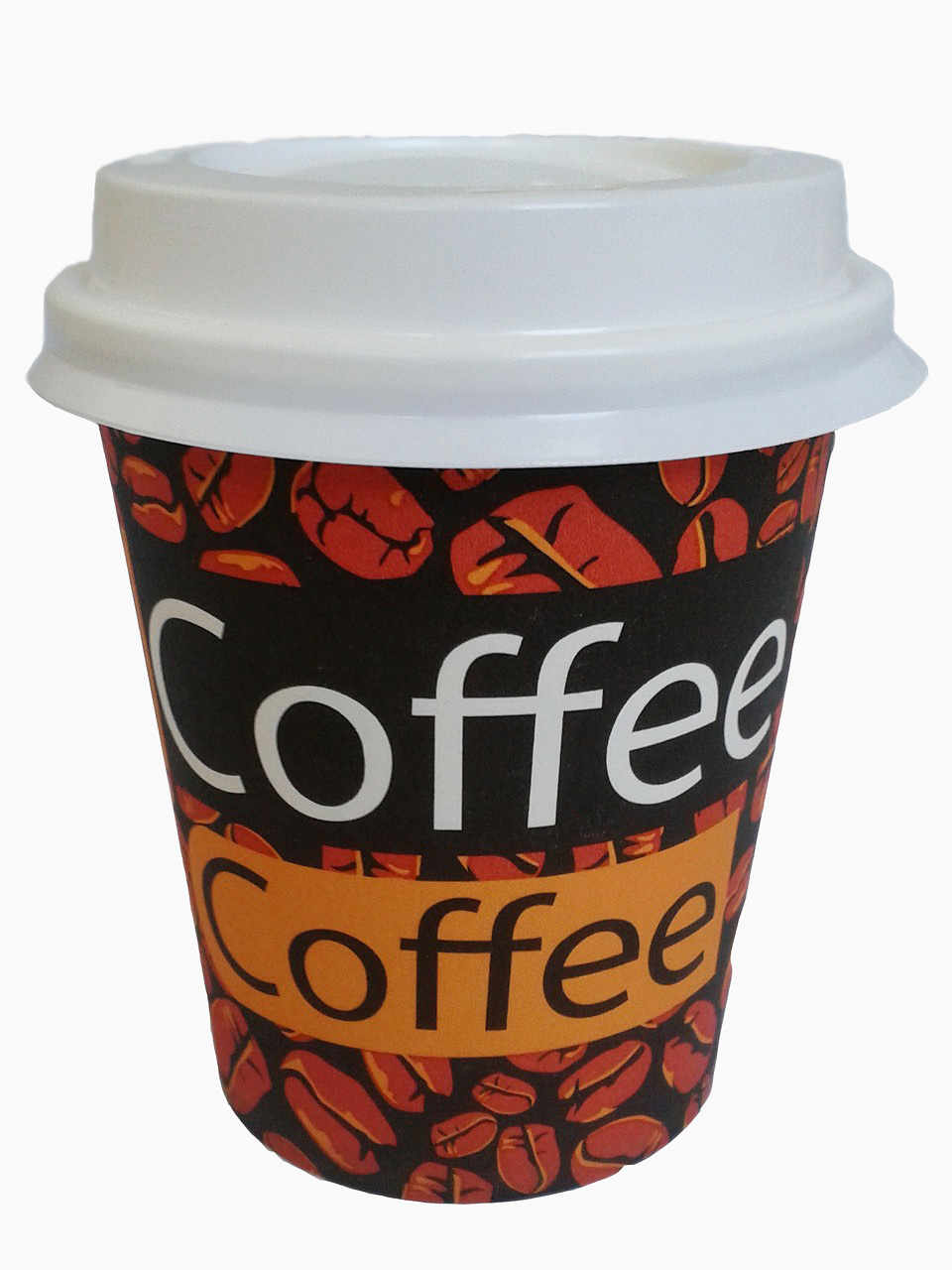 Coffee chain Starbucks announced last week that it is trialling the introduction a 5p charge for takeaway cups. The proceeds will be donated to environmental charity Hubbub. Starbucks is the first UK coffee chain to make such a move and it hopes that the charge will reduce the use of disposable cups.
Coffee chain Starbucks announced last week that it is trialling the introduction a 5p charge for takeaway cups. The proceeds will be donated to environmental charity Hubbub. Starbucks is the first UK coffee chain to make such a move and it hopes that the charge will reduce the use of disposable cups.
Perhaps unwittingly, Starbucks appears to have based its trial on important insights from behavioural economics and this may significantly increase the likelihood that it is successful.
Behavioural economics was thrown into the spotlight last year when one of its leading advocates, Richard Thaler, was awarded the Nobel prize in Economics. However, two of Thaler’s mentors, Amos Tversky and Daniel Kahneman, sowed the seeds for the field of behavioural economics. Most notably, in one of the most cited papers in economics, in 1979 they published a ground breaking alternative to the standard model of consumer choice.
One of the key insights from their model, known as prospect theory, is that rather than simply being concerned with their overall level of wealth, individuals care about gains and losses in wealth relative to a reference point. Furthermore, individuals are loss averse – a loss hurts about twice as much as an equivalent gain makes them feel good.
 So how does this help to predict how consumers will react to Starbucks’ trial? Well, crucially, Starbucks is increasing the price of coffee in a takeaway cup. Prospect theory predicts that consumers will see this as a loss relative to the pre-trial price, which serves as a reference point. Since this hurts them a lot, they will be likely to take measures to avoid the levy. In support of this, research undertaken by Starbucks shows that 48% of consumers asked said that they would definitely carry a reusable cup to avoid paying the extra 5p.
So how does this help to predict how consumers will react to Starbucks’ trial? Well, crucially, Starbucks is increasing the price of coffee in a takeaway cup. Prospect theory predicts that consumers will see this as a loss relative to the pre-trial price, which serves as a reference point. Since this hurts them a lot, they will be likely to take measures to avoid the levy. In support of this, research undertaken by Starbucks shows that 48% of consumers asked said that they would definitely carry a reusable cup to avoid paying the extra 5p.
As the company’s vice-president of communications, Simon Redfern, made clear, this would be in stark contrast to Starbucks’ previous attempts to reduce waste:
We’ve offered a reusable cup discount for 20 years, with only 1.8% of customers currently taking up this offer.
Furthermore, in 2016 they even experimented with increasing the discount from 25p to 50p. However, the impact on consumer behaviour remained low. Again, this evidence is entirely consistent with prospect theory. If consumers view the discounted price as a gain relative to their reference point, while they would feel some benefit from saving money, this would be felt much less than the equivalent loss would be.
Therefore, it seems likely that introducing a charge for takeaway cups will prove a much better way to reduce waste. More generally, this example demonstrates that the significant insights which prospect and other behavioural theories provide should be taken into account when trying to intervene to influence consumer behaviour in markets.
Articles
Questions
- How do you think rivals might respond to Starbuck’s strategy?
- Are there any other strategies Starbuck’s might pursue to help reduce the use of disposable cups?
- Can you think of any other situations in which individuals exhibit loss aversion?
 Each year for the past 60 years, the ONS has published ‘Family Spending’, which ‘gives an insight into the spending habits of UK households, broken down by household characteristics and types of spending’. The latest issue, covering the financial year ending 2017, has just been released.
Each year for the past 60 years, the ONS has published ‘Family Spending’, which ‘gives an insight into the spending habits of UK households, broken down by household characteristics and types of spending’. The latest issue, covering the financial year ending 2017, has just been released.
To mark the 60th anniversary, the ONS has also published a blog, Celebrating 60 years of Family Spending, which compares spending patterns in 2017 with those in 1957. The blog looks at the percentage of the family budget spent on various categories, such as food, clothing, housing, tobacco and alcohol. Some of the percentages have changed dramatically over the years; others have hardly changed at all.
Before you read on, of the six categories mentioned above, which do you think have increased, which fallen and which stayed the same? What is your reasoning?
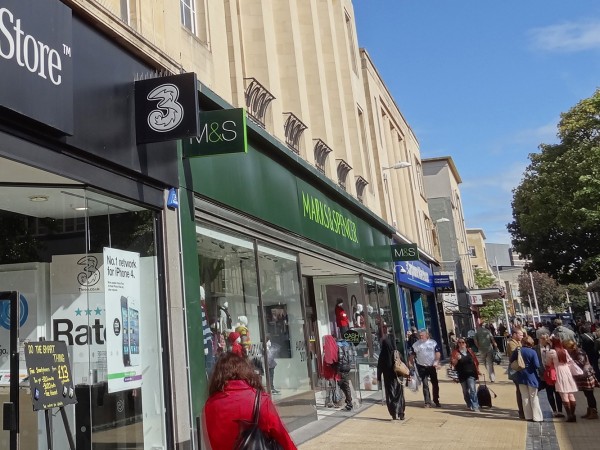 Differences in patterns of consumption partly reflect incomes. In 1957, real household income was £381 in today’s prices; today it’s £544 (43% more). You would expect, therefore, that a greater proportion of household incomes today would be spent on more luxurious goods, with a higher income elasticity of demand.
Differences in patterns of consumption partly reflect incomes. In 1957, real household income was £381 in today’s prices; today it’s £544 (43% more). You would expect, therefore, that a greater proportion of household incomes today would be spent on more luxurious goods, with a higher income elasticity of demand.
Other changes in consumption patterns reflect changes in tastes and attitudes. Thus there has been a huge fall in the proportion of household income spent on tobacco – down from 6% in 1957 to 1% in 2017.
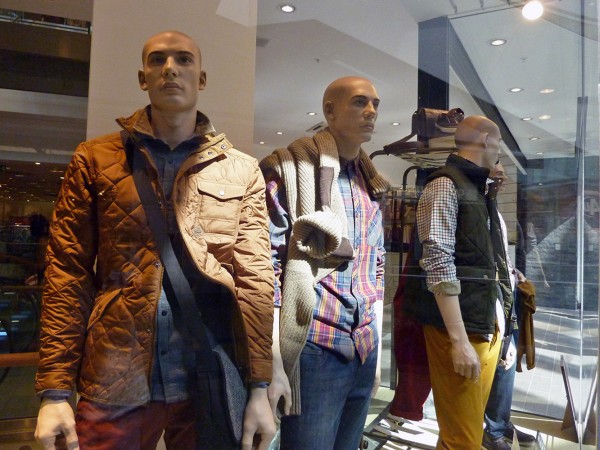 Three of the biggest changes over the 60 years have been in housing costs, food and clothing. Housing costs (rent, mortgage interest, council tax, maintenance and home repairs) have doubled from around 9% to around 18% (although they were around 20% before the huge fall in interest rates following the financial crisis of 2007–8). Expenditure on food, by contrast, has fallen – from around 33% to around 16%. Expenditure on clothing has also fallen, from around 10% to around 5%.
Three of the biggest changes over the 60 years have been in housing costs, food and clothing. Housing costs (rent, mortgage interest, council tax, maintenance and home repairs) have doubled from around 9% to around 18% (although they were around 20% before the huge fall in interest rates following the financial crisis of 2007–8). Expenditure on food, by contrast, has fallen – from around 33% to around 16%. Expenditure on clothing has also fallen, from around 10% to around 5%.
Expenditure on alcohol, on the other hand, having risen somewhat in the 1970s and 80s, is roughly the same today as it was 60 years ago, at around 3% of household expenditure.
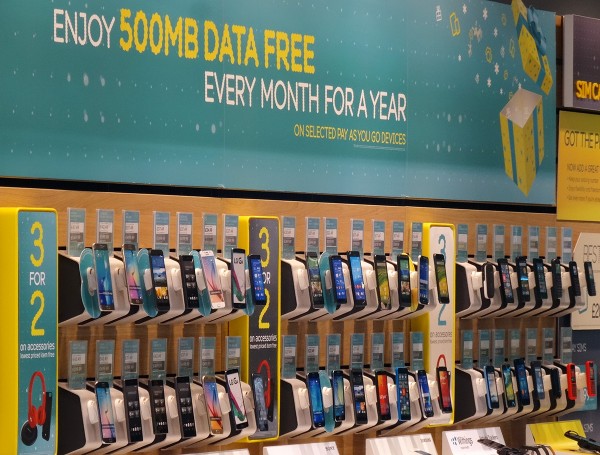 Some of the explanations for these changing patterns can be found on the supply side – changing costs of production, new technologies and competition; others can be found on the demand side – changes in tastes and changes in incomes. Some goods and services which we use today, such as computers, mobile phones, many other electrical goods, high-tech gyms and social media were simply not available 60 years ago.
Some of the explanations for these changing patterns can be found on the supply side – changing costs of production, new technologies and competition; others can be found on the demand side – changes in tastes and changes in incomes. Some goods and services which we use today, such as computers, mobile phones, many other electrical goods, high-tech gyms and social media were simply not available 60 years ago.
Articles
Celebrating 60 years of Family Spending ONS blog, Joanna Bulman (18/1/18)
How did households budget in 1957? BBC News, Simon Gompertz (18/1/18)
Rising burden of housing costs shown by 60-year UK spending survey Financial Times, Gemma Tetlow (18/1/18)
Data
Family spending in the UK: financial year ending 2017 ONS Statistical Bulletin (18/1/18)
All data related to Family spending in the UK: financial year ending 2017 ONS datasets (18/1/18)
Questions
- Why has expenditure on housing increased so much as a proportion of household expenditure? What underlying factors help to explain this?
- Why has expenditure on food fallen as a proportion of household expenditure? Are the explanations on both the demand and supply sides?
- What has happened to the proportion of expenditure going on leisure goods and services? Explain.
- What factors affect the proportion of expenditure going on motoring?
- Of the broad categories of expenditure considered in this blog, which would you expect to increase, which to decrease and which to stay roughly the same over the coming 10 years? Why?
- If expenditure on a particualar good falls as a percentage of total expenditure as income rises, does this make it an inferior good? Explain.
 We are coming into the big spending season, with Black Friday, Cyber Monday, the run-up to Christmas and then the winter sales. So will we all be rational maximisers and weigh up the utility we expect to receive from items against the price we pay (plus any other cost, such as time spent searching/shopping)? Or will we use a set of heuristics which make life easier and that we have found to be useful in helping us choose – heuristics such as buying things we’ve liked before, or going for things on special offer?
We are coming into the big spending season, with Black Friday, Cyber Monday, the run-up to Christmas and then the winter sales. So will we all be rational maximisers and weigh up the utility we expect to receive from items against the price we pay (plus any other cost, such as time spent searching/shopping)? Or will we use a set of heuristics which make life easier and that we have found to be useful in helping us choose – heuristics such as buying things we’ve liked before, or going for things on special offer?
The answer is that we do probably use a set of heuristics, at least for many items. And don’t the retailers and the marketing firms they employ know this!
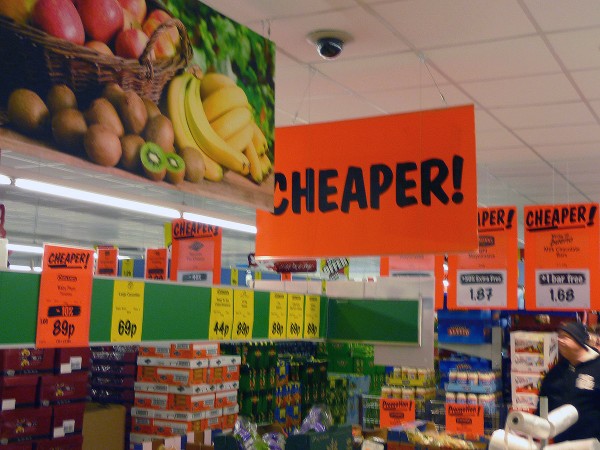
They will use all sorts of tricks of the trade to persuade us to part with our money. These tricks are designed to nudge us (or push us), without us feeling manipulated or conned – at least until we’ve bought their product.
And the tricks are getting more sophisticated. They include special offers which are not as good as they seem, time-limited offers which stimulate us to buy quickly without carefully thinking about what we’re doing, cunning positioning of products in shops to encourage us to buy things we had not planned to buy, adverts which play to our idealised perceptions or the ‘good life’ or what we would like to achieve, and packaging or display which make the product seem better than it is.
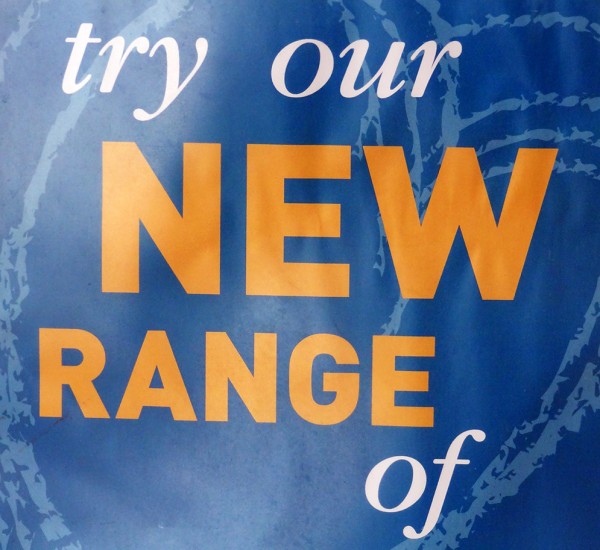
Also we are increasingly faced with targeted advertising where our smart devices capture information about our spending habits and tastes through our previous online spending or our search behaviour. This is then fed to advertisers to tailor adverts specifically to us on our mobiles, tablets, laptops and even, soon, on our smart TVs.
We may have a general desire to maximise utility from our spending, but market failures, such as consumers having imperfect information about products and a present bias (see also) in decision making, make us easy targets for the advertising and marketing industry. They understand the heuristics we use and try to take maximum advantage of them.
Happy shopping!
Articles
How shops use tricks to get you spending The Conversation, Cathrine Jansson-Boyd (16/11/17)
ColourPop looks to Qubit for next-gen personalization guidance Retail Dive, Dan O’Shea (13/6/17)
Channel 4 to offer 100% ad targeting across All 4 platform, seeking partners for linear equivalent The Drum, Jessica Goodfellow (14/11/17)
How Google aims to bring TV advertising into the 21st century The Drum, Ronan Shields (19/10/17)
How to Use Heuristics to Your Marketing Advantage MarketingProfs, Cam Secore (12/11/15)
Questions
- Does the use of heuristics contradict the assumption that consumers behave rationally?
- Give some examples of heuristics that you yourself use.
- Other than those identified above and in the first article, what ‘tricks’ might companies play on you to persuade you to buy their products?
- Is advertising personally targeted to individual consumers desirable for them?
- Give some examples of present bias in people’s behaviour.
- What factors should a retailer take into account when deciding whether to make pre-Christmas discounts?
- Explain what is meant by ‘affect heuristic’ and how the advertising industry uses the concept in setting the background to or scenario of an advertisement.
- Have you ever been persuaded into buying something you didn’t want? Why were you persuaded?
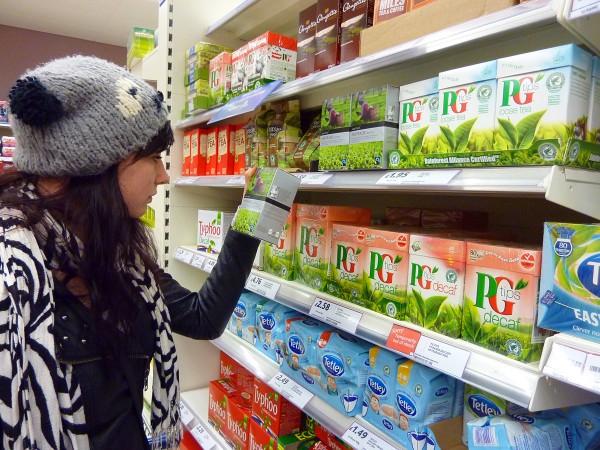 The annual Sveriges Riksbank Prize in Economic Sciences in Memory of Alfred Nobel, normally known as the Nobel Prize in Economics, has been awarded 49 times since it was founded in 1969. Many well-known economists have been recipients of the award. This year it had been awarded to Richard Thaler for his research in behavioural economics. The award recognises his work in integrating economics with psychology.
The annual Sveriges Riksbank Prize in Economic Sciences in Memory of Alfred Nobel, normally known as the Nobel Prize in Economics, has been awarded 49 times since it was founded in 1969. Many well-known economists have been recipients of the award. This year it had been awarded to Richard Thaler for his research in behavioural economics. The award recognises his work in integrating economics with psychology.
Richard H. Thaler has incorporated psychologically realistic assumptions into analyses of economic decision-making. By exploring the consequences of limited rationality, social preferences, and lack of self-control, he has shown how these human traits systematically affect individual decisions as well as market outcomes.
In total, Richard Thaler’s contributions have built a bridge between the economic and psychological analyses of individual decision-making. His empirical findings and theoretical insights have been instrumental in creating the new and rapidly expanding field of behavioural economics, which has had a profound impact on many areas of economic research and policy.
Instead of making the assumption that people are rational maximisers, behavioural economists look at how people actually behave and respond to various incentives.
For example, people may be motivated by concepts of fairness and be prepared to make personal sacrifices for the sake of others. Such concepts of fairness tend to depend on the social context in which choices are made and can be influenced by the way choices are framed.
Also people may not weigh up costs and benefits but use simple rules of thumb, or heuristics, when making decisions. This might be an example of rational behaviour when time or information is limited, but the use of such heuristics often becomes engrained in behaviour and the rules become just habit.
People may also suffer from a lack of willpower or ‘present bias’. They may spend more than they can afford because they cannot resist the temptation to have a product. They may overeat because of the short-term pleasure it brings and ignore the long-term effects on their health.
 Understanding how people make choices and the temptations to which they succumb can help policymakers devise incentives to change behaviour to achieve various social goals.
Understanding how people make choices and the temptations to which they succumb can help policymakers devise incentives to change behaviour to achieve various social goals.
One type of incentive is nudging. A well-known example is people’s choice about whether to become an organ donor in the event of their death. If people are required to opt in to such a scheme, they may never get round to doing so. However, if they are required to opt out if they do not want to participate, many more people would thereby be donors and more organs would become available.
Another form of nudge is making desirable things fun. A well-known experiment here was encouraging people to use the stairs rather than the escalator when exiting a subway by making the stairs like a musical keyboard. See here for more examples.
The UK government set up a Behavioural Insights Team – also known as the Nudge Unit (now independent of government) to find ways of encouraging people to behave in their own or society’s best interests.
But it is not just governments which use the insights of behavioural economists such as Thaler. The advertising and marketing industry is always examining the most effective means of influencing behaviour. A classic example is the loss leader, where consumers are tempted into a shop with a special offer and then end up buying more expensive items there rather than elsewhere.
Firms and advertisers know only too well the gains from tempting people to buy items that give them short-term gratification – such as putting chocolate bars by the tills in supermarkets.
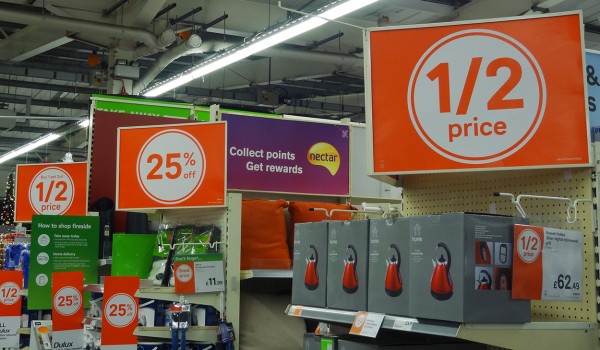 Understanding consumer psychology helps firms to manipulate people’s choices. And such manipulation may not be in our best interests. If we are being persuaded to buy this product or that, are we fully aware of what’s going on and how our tastes are being affected? Would we, by standing back and reflecting, make the same choices as we do on impulse or out of habit?
Understanding consumer psychology helps firms to manipulate people’s choices. And such manipulation may not be in our best interests. If we are being persuaded to buy this product or that, are we fully aware of what’s going on and how our tastes are being affected? Would we, by standing back and reflecting, make the same choices as we do on impulse or out of habit?
And governments too can seek to manipulate people in ways that some may find undesirable. Governments may try to influence us to follow their particular political agenda – as may newspapers. Certainly, during election or referendum campaigns, we are being nudged to vote a particular way.
It is important then for us to understand when we are being nudged or otherwise persuaded. Do we really want to behave in that way? Just as it is important, then, for governments and firms to understand individuals’ behaviour, so too it is important for individuals to understand their own behaviour.
Articles
Richard Thaler’s work demonstrates why economics is hard The Economist, RA (11/10/17)
Nobel in Economics Is Awarded to Richard Thaler The New York Times, Binyamin Appelbaum (9/10/17)
The Making of Richard Thaler’s Economics Nobel The New Yorker, John Cassidy (10/10/17)
Nobel prize in economics awarded to Richard Thaler The Guardian, Richard Partington (10/10/17)
Richard Thaler is a controversial Nobel prize winner – but a deserving one The Guardian, Robert Shiller (11/10/17)
What the mainstreaming of behavioural nudges reveals about neoliberal government The Conversation, Rupert Alcock (17/10/17)
This year’s economics Nobel winner invented a tool that’s both brilliant and undemocratic Vox, Henry Farrell (16/10/17)
How a critic of economics became the disciplines Nobel-winning best friend The Guardian, Tiago Mata and Jack Wright (25/10/17)
Podcast
 How Richard Thaler changed economics BBC, More of Less, Tim Harford (14/10/17)
How Richard Thaler changed economics BBC, More of Less, Tim Harford (14/10/17)
Questions
- For what reasons may individuals not always weigh up the costs and benefits of purchasing an item?
- Give some examples of the use of heuristics in making consumption decisions?
- Is the use of heuristics irrational?
- Explain how people considering that they have behaved fairly is influenced by the social context of their behaviour?
- Find out what is meant by the Dictator Game and how it can challenge the assumption that people behave selfishly. How is the ‘dictator’s’ behaviour affected by the possible payoffs?
- Thaler suggested that Brexit could be an example of behavioural economics in action. Find out what he meant by this. Do you agree?
- Give some examples of ways in which the government can nudge people to persuade them to behave in socially or individually desirable ways.
- Find out what is meant by the ‘endowment effect’ and how it influences people’s valuation of items they own.
- Why may nudging by governments be undemocratic?
 One of the key developments in economics in recent years has been the growing influence of behavioural economics. We considered some of the insights of behavioural economics in a blog in 2016 (A nudge in the right direction?). As the post stated, ‘Behavioural economists study how people’s buying, selling and other behaviour responds to various incentives and social situations. They don’t accept the simplistic notion that people are always rational maximisers.’ The post quoted from a Livemint article (see first linked article below):
One of the key developments in economics in recent years has been the growing influence of behavioural economics. We considered some of the insights of behavioural economics in a blog in 2016 (A nudge in the right direction?). As the post stated, ‘Behavioural economists study how people’s buying, selling and other behaviour responds to various incentives and social situations. They don’t accept the simplistic notion that people are always rational maximisers.’ The post quoted from a Livemint article (see first linked article below): The recognition that framing is important to choices has led to the development of nudge theory. Indeed, it underpins many marketing techniques. These seek to persuade people to make a particular choice by framing it in an optimistic way or presenting it in a way that makes it easy to decide.
The recognition that framing is important to choices has led to the development of nudge theory. Indeed, it underpins many marketing techniques. These seek to persuade people to make a particular choice by framing it in an optimistic way or presenting it in a way that makes it easy to decide. 2017 Nudge Nudge
2017 Nudge Nudge 2017 Nobel Prize Lecture
2017 Nobel Prize Lecture Coffee chain Starbucks
Coffee chain Starbucks  So how does this help to predict how consumers will react to Starbucks’ trial? Well, crucially, Starbucks is increasing the price of coffee in a takeaway cup. Prospect theory predicts that consumers will see this as a loss relative to the pre-trial price, which serves as a reference point. Since this hurts them a lot, they will be likely to take measures to avoid the levy. In support of this,
So how does this help to predict how consumers will react to Starbucks’ trial? Well, crucially, Starbucks is increasing the price of coffee in a takeaway cup. Prospect theory predicts that consumers will see this as a loss relative to the pre-trial price, which serves as a reference point. Since this hurts them a lot, they will be likely to take measures to avoid the levy. In support of this, 








